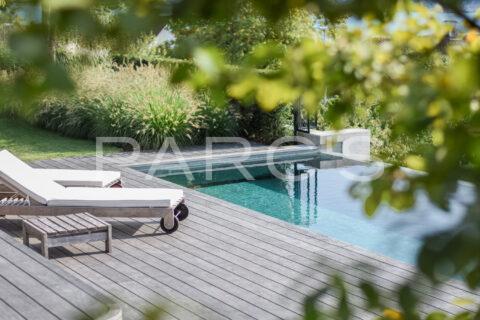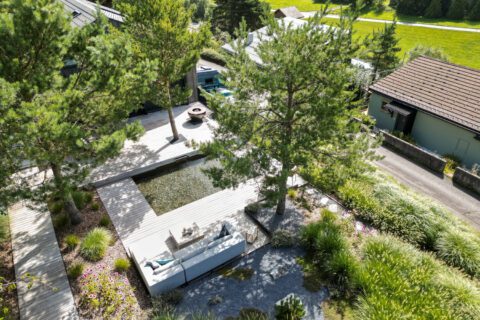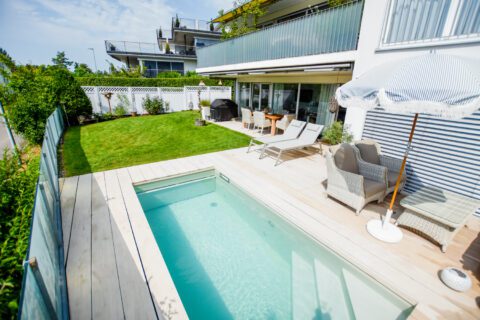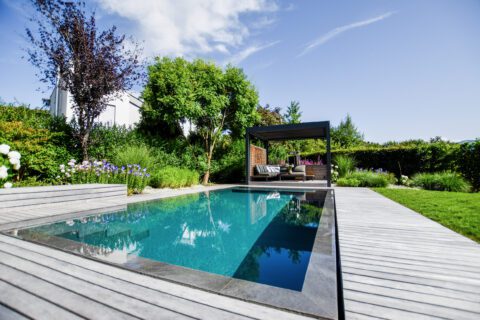Formal gardens have clear basic shapes. The simple and clearly structured gardens convey a feeling of tranquility and impress with their neat and reduced design. True to the motto "less is more", clear forms and discreet accents create an uncluttered garden. The outdoor space is basically oriented to the architecture of the residential building, therefore the formal garden fits well with a modern building with clean lines.
As a rule, basic geometric shapes divide the garden into square or round areas. Instead of a mix of many different materials, the formal garden places a lot of emphasis on just a few elements. Green areas, straight garden paths, an accurately trimmed hedge and individual plants are central to the design of a formal garden.

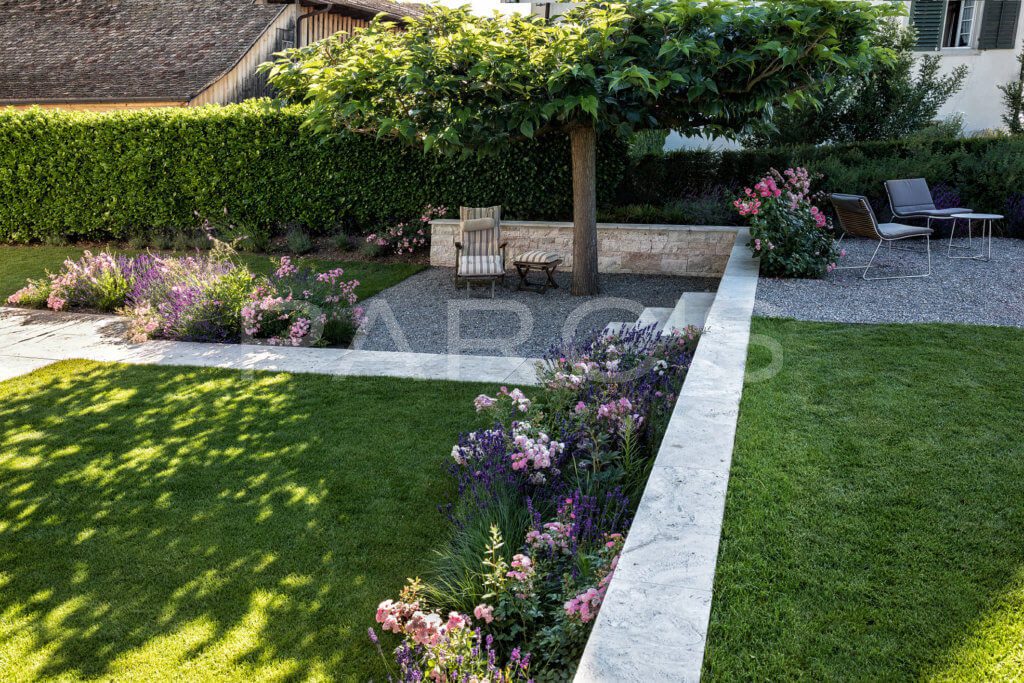
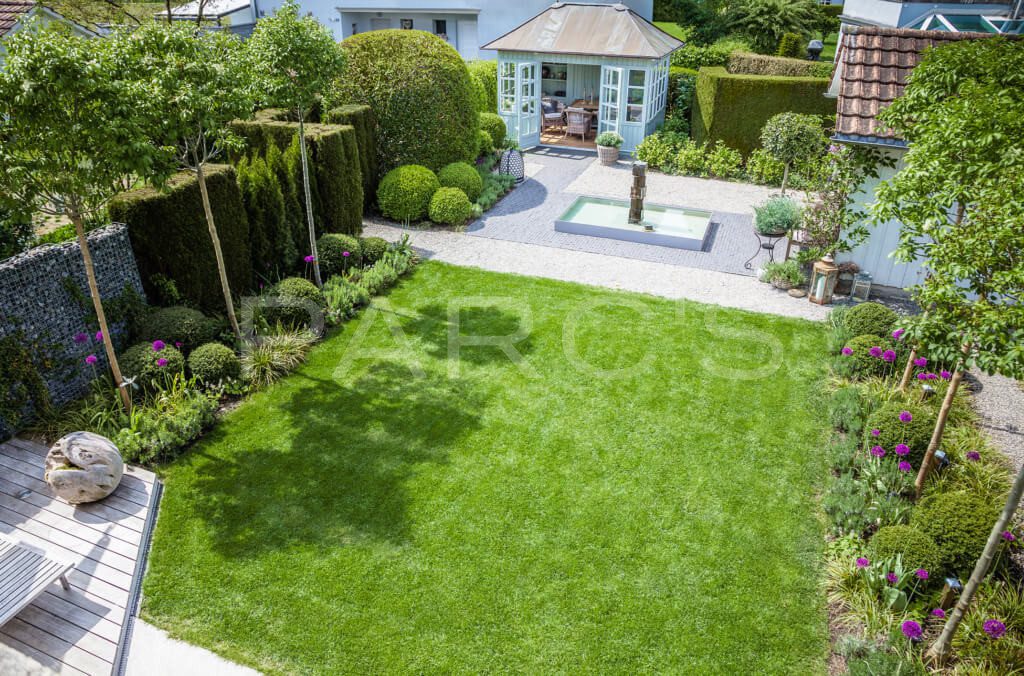
Clear structures with the planting
The type of planting plays a secondary role in the formal garden. It adapts to the clear structures of the garden and provides subtle accents here and there. Precisely cut, straight hedges divide or border the garden. This gives the garden a tidiness. At the same time, evergreen hedges are a natural privacy screen.
The choice of plants is always based on the architecture of the garden. In the formal garden, plants in geometric shapes are preferred. With pruning-friendly woody plants shaped into spheres or squares, the play of forms in the garden is picked up again. Geometric shapes are also considered for flowering perennials: Ornamental leeks with their purple flower spheres, for example, provide beautiful contrasts and yet fit in with the formal garden's play of shapes.
These plants are typically found in a formal garden:
- Trimmed hedges (yew, beech)
- Hydrangeas
- Lavender
- Roses
Formal garden with a touch of liveliness
As a rule, formal gardens look very calm, discreet and well-kept. But with individual design elements, the garden becomes lively and playful.
A formal garden can be well broken up by grasses and perennials. This allows the garden to be experienced and the seasons can be read beautifully.
The combination of trimmed hedges with airy grasses placed in front of them naturally softens the border. But colorful flowering perennials in matching containers also create an eye-catching effect. Evergreen shrubs cut into shape provide liveliness and warmth. Other elements such as water features, deliberately placed benches, gazebos or pergolas also lend a romantic atmosphere to the formal garden. Artistic sculptures are also popular: Skillfully placed, they provide visual highlights and emphasize the modern character of the formal garden.

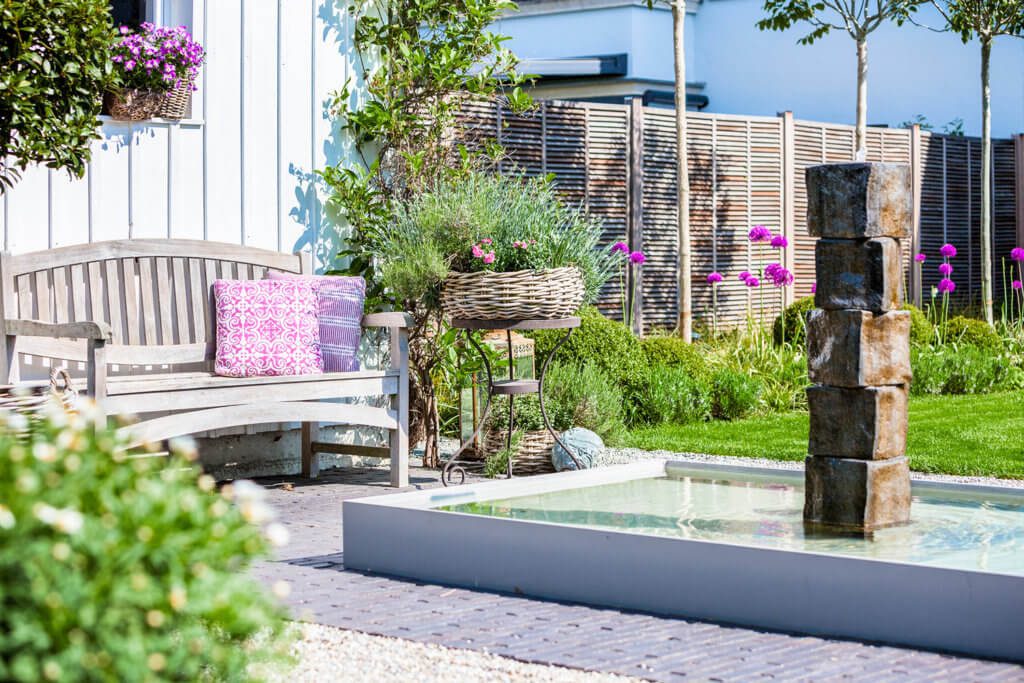
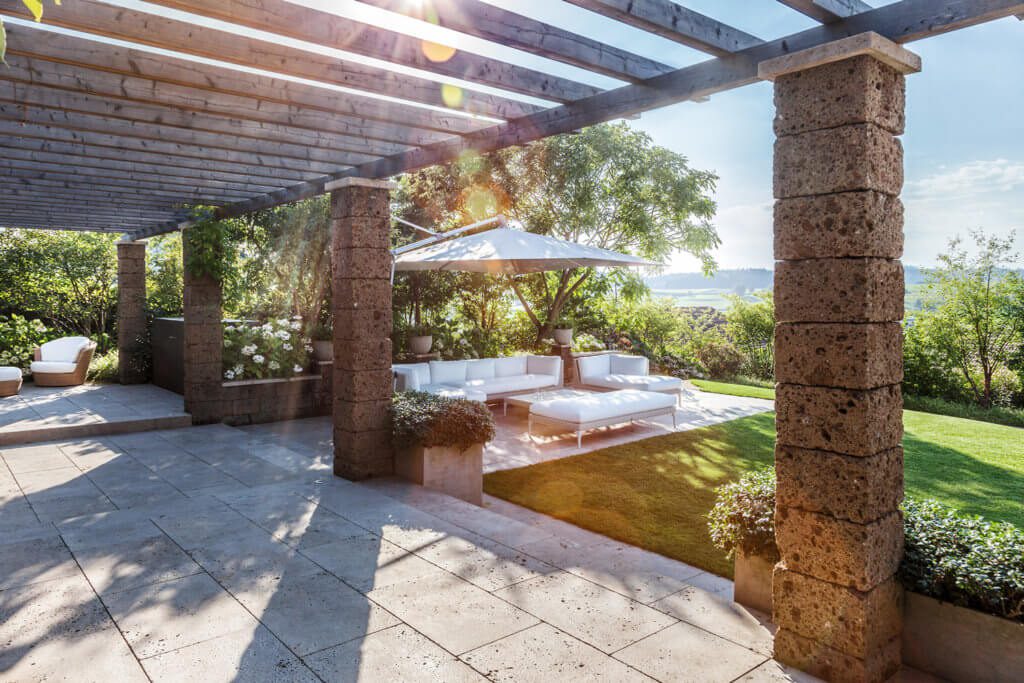
Care of the formal garden
A formal garden certainly requires more maintenance to keep it looking attractive and clean all year round. The hedges are ideally trimmed several times a year to keep them in shape and give the garden the desired structure at all times. A formal garden is also characterized by its neat appearance, so weeds as well as wilted plants should be removed regularly.
In order to keep the maintenance effort within limits, deliberate attention is paid to low-maintenance planting. But in today's digital age, there are useful helpers that make gardening easier. For the lawn, an automatic lawn robot is suitable, which regularly cuts and maintains the lawn. Irrigation systems that supply the plants with the required amount of water fully automatically also take a lot of work off the garden owner's hands.
Our partner GardenTec GmbH is the specialist for technology in the garden. Learn more about the possibilities for your garden here .
Garden inspiration
You are also thinking about redesigning your garden? We will be happy to advise you personally and without obligation. In the meantime, our reference gardens with timeless design provide inspiration.


